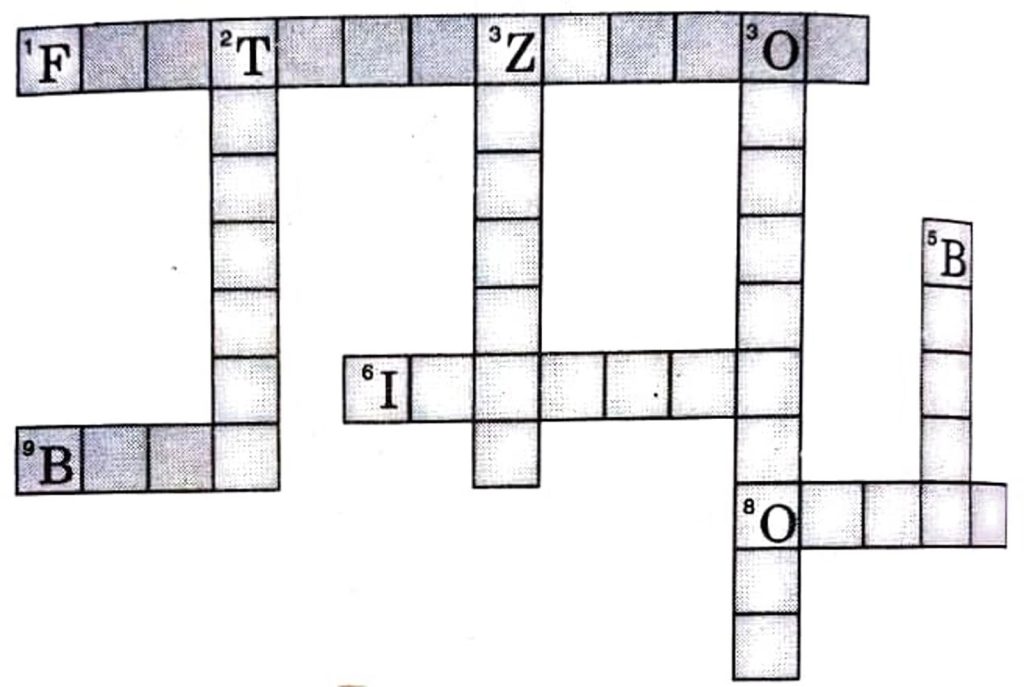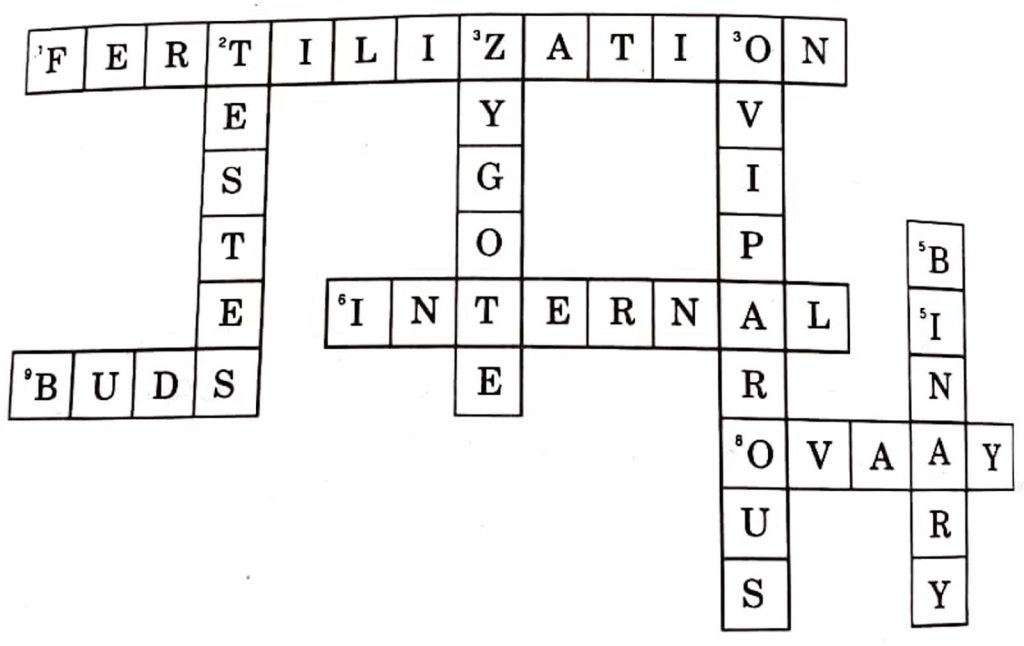NCERT Class 8 Science Chapter 9 Reproduction in Animals Solutions to each chapter is provided in the list so that you can easily browse through different chapters NCERT Class 8 Science Chapter 9 Reproduction in Animals and select need one. NCERT Class 8 Science Chapter 9 Reproduction in Animals Question Answers Download PDF. NCERT Class 8 Science Solutions.
NCERT Class 8 Science Chapter 9 Reproduction in Animals
Also, you can read the NCERT book online in these sections Solutions by Expert Teachers as per Central Board of Secondary Education (CBSE) Book guidelines. CBSE Class 8 Science Solutions are part of All Subject Solutions. Here we have given NCERT Class 8 Science Chapter 9 Reproduction in Animals and Textbook for All Chapters, You can practice these here.
Reproduction in Animals
Chapter: 9
NCERT TEXT BOOK EXERCISES
Q. 1. Explain the importance of reproduction in organisms.
Ans. Reproduction helps to increase the population of species. It is an important biological process for existance and continuity of a species.
Q. 2. Describe the process of fertilization in human beings.
Ans. In humans, fertilization occurs in the body of the female partner. The process of reproduction starts with mating during which the male releases male sex cells (sperms) into the body of the female.
When sperms come in contact with an ovum (the egg) one of the sperms may fuse with the egg. Such a fusion of the sperm with the egg is called fertilization. During fertilization, the nucleus of the sperm and the egg fuse to form a single nucleus. The fertilized egg is called zygote.
Q. 3. Choose the most appropriate answer:
(a) Internal fertilization occurs:
(i) in female body.
(ii) outside female body.
(iii) in male body.
(iv) outside male body.
Ans. (i) in female body.
(b) A tadpole develops into an adult frog by the process of:
(i) fertilization.
(ii) metamorphosis.
(iii) embedding.
(iv) budding.
Ans. (ii) metamorphosis.
(c) The number of nuclei present in a zygote is:
(i) none.
(ii) one.
(iii) two.
(iv) four.
Ans. (ii) one.
Q. 4. Indicate whether the following sentences is True (T) or False (F):
(a) Oviparous animals give birth to young ones.
Ans. False.
(b) Each sperm is a single cell.
Ans. True.
(c) External fertilization takes place in frog.
Ans. True.
(d) A new human individual developed from a cell called gamete.
Ans. False.
(e) Egg laid after fertilization is made up of a single cell.
Ans. True.
(f) Amoeba reproduces by budding.
Ans. False.
(g) Fertilization is necessary even in asexual reproduction.
Ans. False.
(h) Binary fission is a method of asexual reproduction.
Ans. True.
(i) A zygote is formed as a result of fertilization.
Ans. True.
(j) An embryo is made up of a single cell.
Ans. False.
Q. 5. Give two differences between a zygote and a foetus?
Ans.
| Zygote | Foetus |
| 1. It contains only one cell. | 1. It contains many cells. |
| 2. It is formed by the fusion of ovum and sperm. | 2. It is formed by repeated division of zygote. |
Q. 6. Define asexual reproduction. Describe the two methods of asexual reproduction in animals.
Ans. Asexual reproduction is that type of reproduction in which only single parent is involved. Asexual reproduction takes place by different methods like budding, binary fission etc.
(i) Budding: This type of reproduction takes place in Hydra and Bacteria. A part of the organism starts bulging out. Slowly it grows and develops into a separate individual.
(ii) Binary fission: In this type of reproduction, a single organism gets divided into two. This type of reproduction takes place in Amoeba. The nucleus of the Amoeba gets divided into two followed by division of their bodies, each part getting one nucleus and developing into separate individual.
Q. 7. In which female reproductive organ does the embryo get embedded?
Ans. Uterus.
Q. 8. What is metamorphosis? Give examples.
Ans. The transformation of larva into an adult through drastic change is called metamorphosis.
Example: frog and butterfly.
Q. 9. Differentiate between internal fertilization and external fertilization.
Ans.
| Internal Fertilisation | External Fertilization |
| 1. The fusion of male gametes with female gametes takes place inside the body of the female partner. | 1. The fusion of male gametes with female gametes takes place outside the body of the female partner. |
| 2. Only the male discharge gametes into genital tract of female. | 2. Both individuals discharge their gametes outside of the body. |
| 3. Development may occur inside the body. | 3. Development occurs outside the body. |
Q. 10. Complete the crossword puzzle using the hints given below
Across:
1. The process of the fusion of the gametes.
6. The type of fertilization in hen.
7. The term used for bulges observed on the sides of the body of Hydra.
8. Eggs are produced here.
Down:
2. Sperms are produced in these male reproductive organs.
3. Another term for the fertilized egg.
4. These animals lay eggs.
5. A type of fission in amoeba.

Ans.


Hi! my Name is Parimal Roy. I have completed my Bachelor’s degree in Philosophy (B.A.) from Silapathar General College. Currently, I am working as an HR Manager at Dev Library. It is a website that provides study materials for students from Class 3 to 12, including SCERT and NCERT notes. It also offers resources for BA, B.Com, B.Sc, and Computer Science, along with postgraduate notes. Besides study materials, the website has novels, eBooks, health and finance articles, biographies, quotes, and more.




